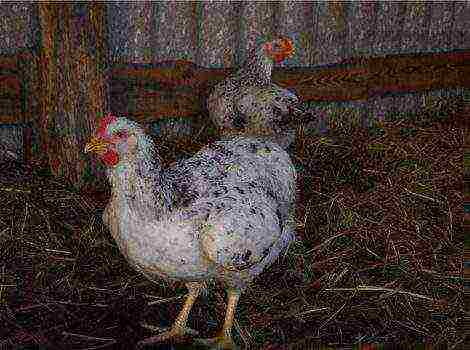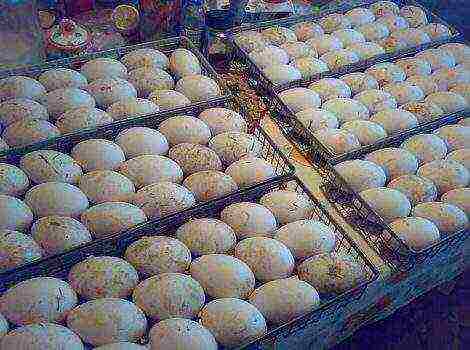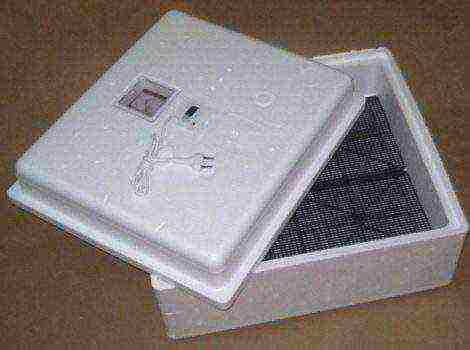Content
- 1 Features of feeding quail at home
- 1.1 How to feed quail chicks?
- 1.2 What to feed the hens with to make them run well?
- 1.3 Feeding male quails
- 1.4 Vitamins
- 1.5 How to drink?
- 1.6 Feed rates, table
- 1.7 How much feed should you give per day?
- 1.8 Compound feed
- 1.9 What is the composition of the compound feed?
- 1.10 How to make compound feed with your own hands at home, proportions?
- 1.11 Conclusion
Features of feeding quails at home
Quails can be kept in small cages and open-air cages. Although they need to be fed in the same way as any poultry, but there are some nuances.
Consider the features of the conditions of keeping and feeding, what should be the norm and how much feed to give.
How to feed quail chicks?
Quail chicks at different ages are fed differently.
Firstly, in the early days, chicks still take nutrients from the yolk, which is not fully assimilated during their incubation period. This is why the chicks are only fed with hard-boiled eggs.
Secondly, at this age chicks need high-calorie and fortified feed.

From the first days of life
- On the first day begin to give boiled chicken and quail eggs with shells.
- From the second day add grated low-fat cottage cheese to the diet at the rate of 2 grams per individual.
- From the third to fourth day add greens (lettuce, dandelion, nettle, young grass) and begin to reduce the amount of eggs in the feed.
Weekly
Already add compound feed with crude protein content 25% and 280 calories of energy and yogurt.
Periods and beyond
They continue to feed the chicks with compound feed. Millet is gradually introduced from the third week... You can already mix in cabbage, clover, alfalfa, spinach and other greens. In winter, greens are replaced with sprouted oats, wheat, onions, millet, corn.
In the fifth week are already giving compound feed for adults. This feed already contains 15% crude protein.
If there is no such compound feed, then you can make it yourself from compound feed for chicks, adding small oatmeal, barley or wheat groats. This is done in the following ratio: 250 grams of compound feed is mixed with 150 grams of cereals.
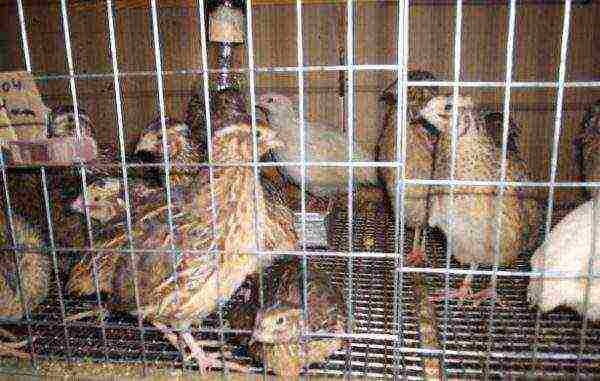
You can also prepare compound feed yourself:
- 240 g of a mixture of various cereals (millet, rice, oatmeal, barley, wheat);
- 144 g of cottage cheese or fish meal and dry skimmed milk;
- 16 g of chalk, shells.
Already poured once a week dry gravel... Also mix boiled potatoes and fresh vegetables (turnips, beets, carrots) and grated apples.
What to feed the hens with to make them run well?
The most popular compound feeds are the same as for layers. So that the laying hens rush well, combine compound feed PK6 and PK5 with PK2 and dietary supplements (with vitamins "A" and "E") for young chickens.
The cheapest mixture turns out to be three-component in equal proportions: corn, soy, alfalfa or meat and bone meal.
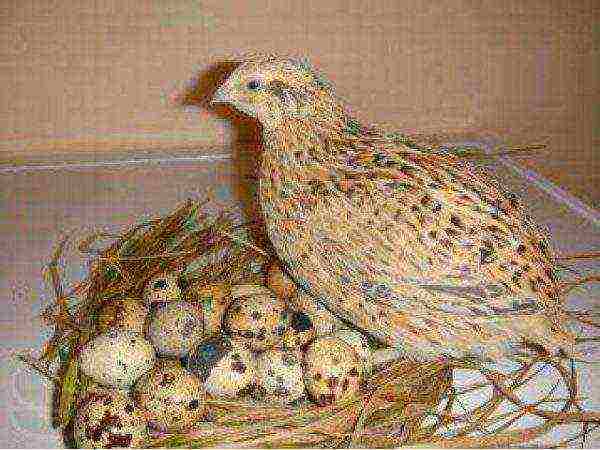
To increase the amount of vitamins, and to diversify the diet of quails, add worms, maggots, finely chopped kitchen waste.
In the summer, weeds with ripe seeds are placed in the cells.
Feeding male quails
As already mentioned, weed seeds, cereals can be added to the quail diet (soris, sorghum, millet), larvae and insects themselves.
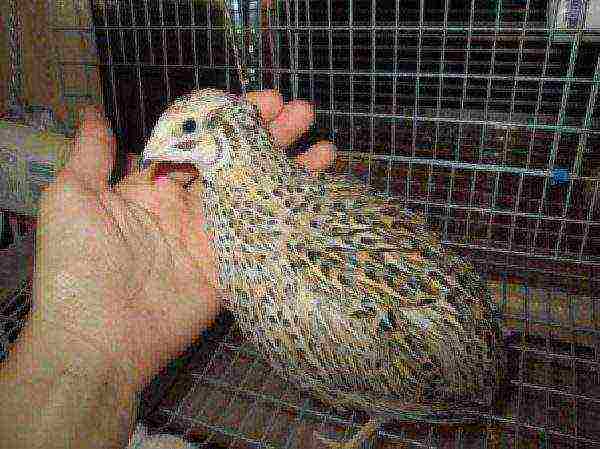
The diet of males should be dominated by canary seed, boiled fish, boiled egg. But there are several features in their feeding:
- Rye is excluded from the diet.
- Legumes add, both in the form of cereals and cooked.
- Add poppy at the rate of 5-7 grams per head.
- Bring in the vetch mixing it with oats into the diet.
- If you have not found a special food for male quails, then it can be replaced food for parrots.
- At least 2 times a day change the water in the drinker.
Vitamins
Additionally, vitamins are purchased and mixed into the feed from the following calculations (see table below):
| Vitamins, mg / kg feed | Bird age, weeks | ||
| 1-4 | 5-6 | Older than 6 | |
| BUT | 15 | 7 | 15 |
| D2 | 2,5 | 1,5 | 1,5 |
| E | 20 | 5 | 20 |
| B1 | 2 | 2 | 2 |
| B2 | 6 | 3 | 5 |
| B3 | 15 | 10 | 20 |
| B4 | 1000 | 500 | 1000 |
| B5 | 30 | 20 | 30 |
| B6 | 4 | 1 | 4 |
| BC | 1 | 1,5 | 1,5 |
| B12 | 50 | 50 | 50 |
| C | 50 | 50 | 50 |
| H | 0,2 | 0,2 | 0,2 |
About micronutrients in feed:
- Manganese 80 mg / kg.
- Zinc 75 mg / kg.
- Copper 5 mg / kg.
- Iron 100 mg / kg.
- Iodine 0.3 mg / kg.
- Cobalt 1 mg / kg.
- Selenium 0.1 mg / kg.
How to drink?
It all depends on where you get the water. If from the river, be sure to boil and let it cool. When you get it out of a well or well, then let it heat up so that the birds do not catch cold.
There is no need to boil tap water. Let it stand to allow the chlorine to dissipate. If the water is in doubt, then simply pass it through the filter.
Once a week, pour a slightly pink solution of potassium permanganate into the drinkers, alternating it with a solution of selenium. For prevention, add vitamin C to the water every 10 days. 1-2 tablets of ascorbic acid per 1 liter are enough.
And here B vitamins are best added separately... Otherwise, vitamins will destroy each other during a chemical reaction in water.
Feed rates, table
| Age, weeks | Compound feed, g | Exchange energy | Crude protein | Calcium | Phosphorus | Sodium | |
| Mj | kcal | ||||||
| 1 | 4 | 0,05 | 12 | 1,93 | 0,19 | 0,03 | 0,01 |
| 2 | 7 | 0,088 | 21 | 3,58 | 0,35 | 0,06 | 0,02 |
| 3 | 13 | 0,16 | 40 | 1,1 | 0,11 | 0,1 | 0,04 |
| 4 | 13 | 0,16 | 40 | 3,58 | 0,35 | 0,1 | 0,04 |
| 5 | 16 | 0,184 | 44 | 2,72 | 0,4 | 0,13 | 0,05 |
| 6 | 16 | 0,184 | 44 | 2,72 | 0,4 | 0,13 | 0,05 |
| 7 | 28 | 0,195 | 46 | 3,36 | 0,45 | 0,11 | 0,05 |
| 8 | 28 | 0,205 | 49 | 3,57 | 0,48 | 0,12 | 0,05 |
| 9 | 28 | 0,207 | 49 | 3,57 | 0,48 | 0,12 | 0,05 |
| over 10 | 28 | 0,293 | 70 | 5,04 | 0,67 | 0,17 | 0,07 |
How much feed should you give per day?
Quail egg breeds give 22-30 g of feed per individual. For meat breeds the amount of feed is slightly more - 23-33 grams. On average, about 25 g per head. The feed is poured into the feeders for 1/3 of the volume.
For adult quails, you can already give whole pears and apples. The fruit is clamped between the cage twigs.
Compound feed
So, there are many types of compound feed. Here are some examples.
- PC-5 (corn, sunflower or soybean cake, wheat, fish meal, etc.) - suitable for feeding the parent flock;
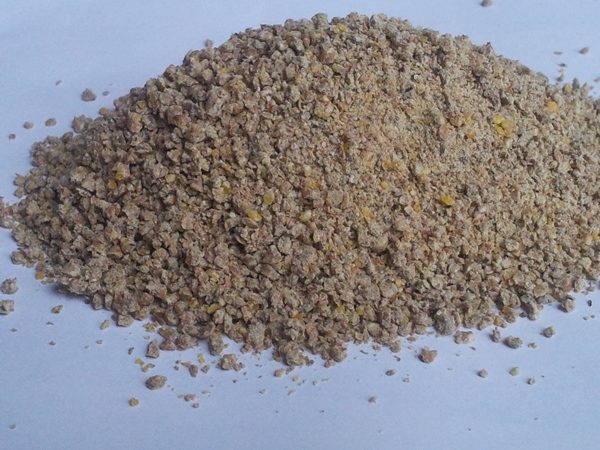
- PC-1 and PC-2... The composition is similar to PK-5, only cheaper due to the addition of barley or wheat bran and chalk. Hence, an adult bird is fed;
- PC-2.2, PC-4, PC-6. These compound feeds are already suitable for feeding quails. Although the best result is obtained by a mixture of broiler feed for chickens (80%) and peas (20%);
What is the composition of the compound feed?
Now let's take a closer look at the types of compound feed for quails of different ages.
For chicks
For chicks, it is better to replace compound feed in the first weeks with premixes and protein-mineral supplements. Already grown-ups are fed with starting compound feed.
Starter compound feed contains corn, sunflower meal, soybean meal, wheat, fodder yeast.
For adult birds
In addition to the already described compound feeds PK-1, PK 3-4, you can also use specialized ones for quails. For example - "Kramar".
For laying hens
To get an egg quails are fed with feedlife, PKp-52k, PK 2-6, Best Mix, Salvit or similar.
They include various cereal grains, sowing, meal or cake of soybeans and sunflower, soybean extrudate, fish and meat and bone meal, corn, corn gluten, limestone, shell, micro- and macroelements, vegetable oil, amino acids, various vitamins and minerals, premix, adsorbent of toxins, antioxidant, multienzyme composition, antibacterial and therapeutic agent.
How to make compound feed with your own hands at home, proportions?
Experienced poultry farmers make compound feed on their own with their own hands.
Recipe 1
Here is a simple example of compound feed:
- 100 g barley grits or barley;
- 400 g corn grits;
- 1 teaspoon meat and bone meal;
- 0.5 teaspoon vegetable unrefined oil;
- 50 g fish or minced meat;
- 50 g curd.
Don't forget to add greens to your quail diet.
Recipe 2 (using a premix)
The recipe for laying hens... In this and subsequent recipes, it is necessary add 10 grams of chalk.
- 200 g corn;
- 200 g wheat;
- 80 g 10% premix for laying hens;
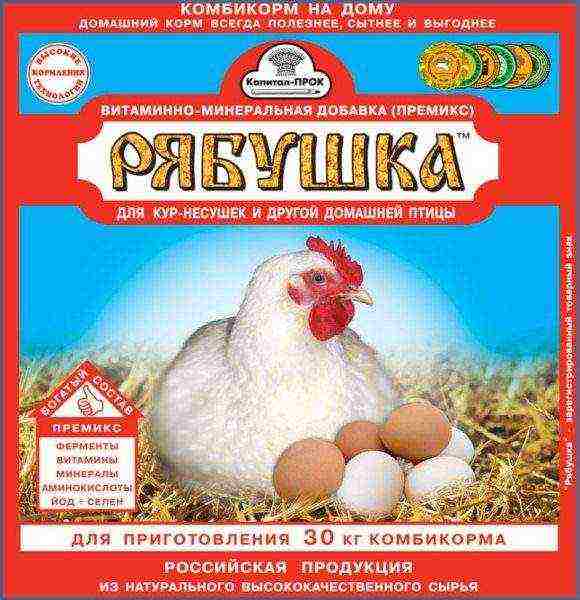
- 90 g sunflower cake (it is better to take fried);
- 90 g soybean meal;
- 45 g meat and bone meal;
- 45 g feed yeast;
- 30 g peas;
- 10 g vegetable oil;
Recipe 3
- 100 g carrots;
- 200 g wheat;
- 100 g sunflower cake;
- 50 g soybean meal;
- 30 g meat and bone meal;
- 30 g feed yeast;
- 10 g sunflower oil;
Recipe 4
- 100 g beets;
- 50 g boiled potatoes;
- 100 g cabbage;
- 200 g millet;
- 200 g semolina;
- 50 g meat and bone meal;
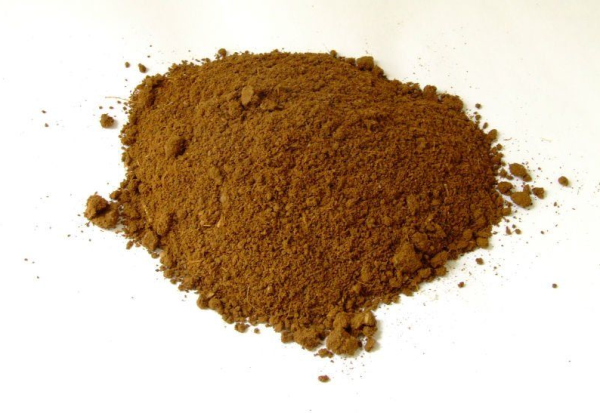
- 5 boiled eggs;
- 100 g curd;
- 50 g feed yeast;
- 10 g vegetable oil;
Recipe 5
- 100 g millet;
- 100 g oatmeal;
- 100 g curd;
- 100 g minced fish;
Recipe 6
- 100 g millet;
- 100 g corn grits;
- 100 g pea groats;
- 50 g mclear bone or fish meal;
- 100 g curd;
Recipe 7
A universal recipe, only the ratio of the weight fractions of the components changes, in accordance with the table below.
| Feed | Age, days | ||||||||
| 1-5 | 6-10 | 11-20 | 21-30 | 31-40 | 41-50 | 51-60 | 61-90 | from 91 | |
| Corn | 5 | 8 | 20 | 30 | 50 | 60 | 80 | 115 | 145 |
| Bran | 4 | 5 | 5 | 10 | 10 | 10 | 15 | 15 | 25 |
| Meat and fish meal | 1 | 3,5 | 7,5 | 11 | 15 | 16,5 | 22,5 | 22,5 | |
| Greens | 3 | 10 | 15 | 20 | 30 | 10 | 40 | 40 | 100 |
| Reverse | 5 | 10 | 10 | 15 | 10 | ||||
| Cottage cheese | 2 | 10 | 10 | ||||||
| Boiled egg | 3 | ||||||||
| Shell | 0,5 | 0,7 | 1,7 | 2 | 2,7 | 2,5 | 2,2 | 2,2 | |
| Salt | 0,1 | 0,1 | 0,3 | 0,1 | |||||
Conclusion
Here are some final tips:
- If there is no special compound feed, increase the amount of protein feeds and greens (carrots, cabbage).
- Don't pick grass near roads.
- Fish waste and minced meat store at a temperature of -1 ... -3 ° С for no more than 6 months.
- Use a meat grinder (manual or electric) for mixing minced meat with other quail feed.
- In the spring, during the breeding season of quails, diversify the diet of brood quails with a feed mixture for parrots and canaries and exclude factory compound feed from their diet a month before.
- Same add 1-2 tbsp. tablespoons of milk powder in the feed.
